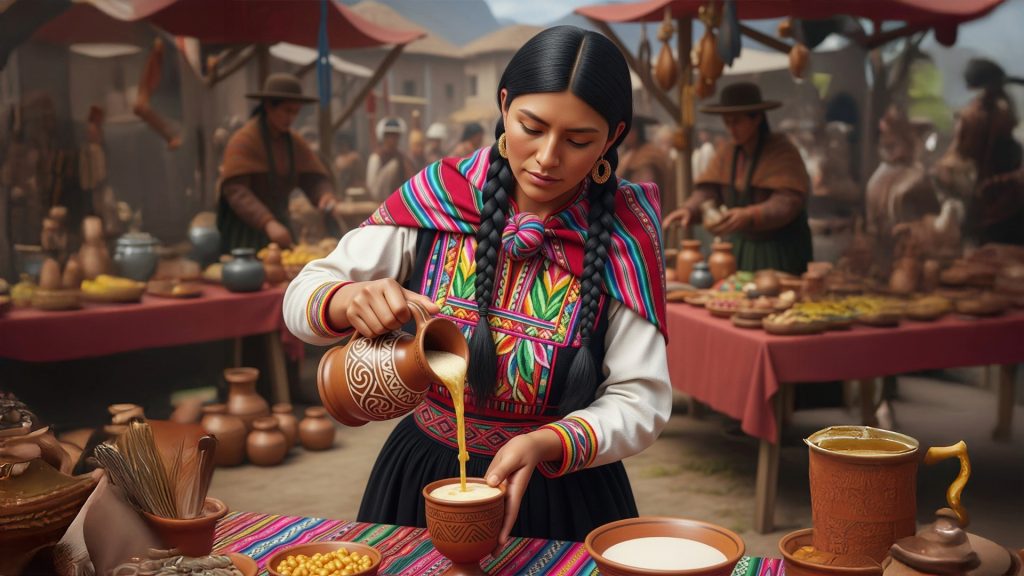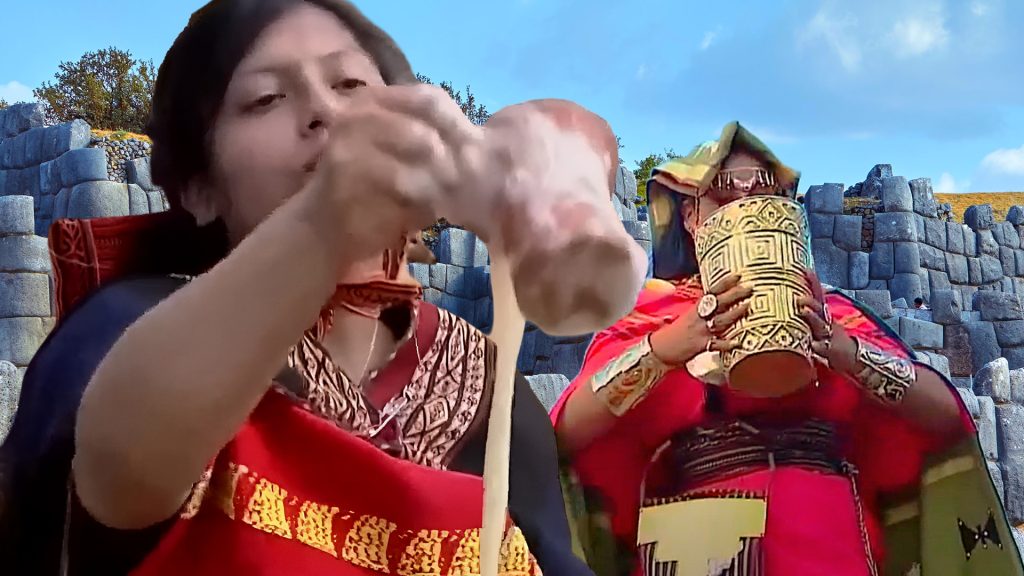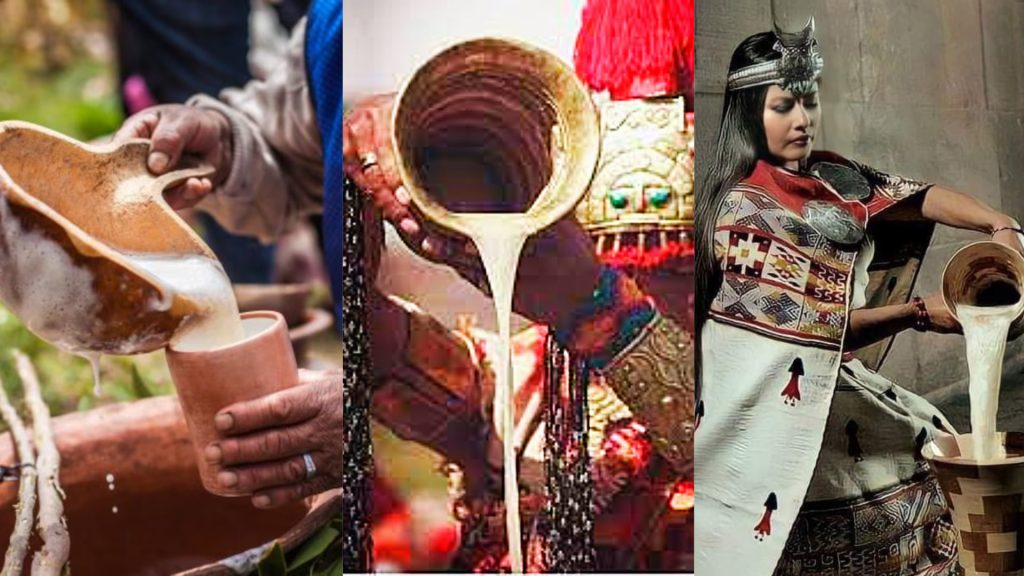Chicha de Jora: The Sacred Drink that Connects Past and Present
Chicha de jora is more than an ancient beverage, it’s a cultural symbol that breathes life into Andean identity. This fermented corn drink has survived for centuries, serving as a bridge between people, nature, and the cosmos. Originating long before the Inca Empire, chicha de jora became a central element in rituals, diplomacy, and everyday life across the highlands of Peru.
One of its origin stories dates back to the time of Tupac Yupanqui, when heavy rains flooded corn storage silos. The soaked maize began to ferment, producing a golden liquid. When someone tasted it, they discovered not just a drink, but an entirely new experience, sour, strong, and spiritually potent. The Inca emperor ordered it perfected and shared among nobles and priests.

Rituals, Royalty, and Sacred Alliances
In the Inca world, chicha de jora played a sacred role. It was served during major religious ceremonies, especially the Inti Raymi, the Sun Festival held each June in Cusco. At sunrise, the Inca would pour the first portion onto the earth as an offering to Inti (the Sun god) and Pachamama (Mother Earth). This gesture expressed gratitude and a plea for fertility in the coming harvest.
Sharing chicha de jora was a communal act, often carried out in qeros, ceremonial cups carved from wood or adorned with gold and silver. These weren’t just vessels; they were spiritual tools. Drinking from a qero symbolized a connection with the divine, a bond between the drinker, the gods, and the earth itself.
The beverage also played a strategic role in politics. When the Inca Empire sought to integrate new regions, envoys would present chicha de jora to local leaders. Accepting the drink meant accepting alliance. More than a gesture, it was a ritualized agreement, a sacred pact sealed with a sip.
Before experiencing the magic of the Inti Raymi, you can explore the heart of the imperial city on a Half Day City Tour in Cusco, a perfect introduction to its rich heritage. To dive even deeper into the living traditions and taste the unique regional flavors of chicha de jora in communities like Chinchero, Ollantaytambo, and Pisac, don’t miss the Tour to Sacred Valley Full Day. Each stop offers a distinct interpretation of this ancestral drink, shaped by altitude, culture, and time.

A Living Tradition: Chicha de Jora in Modern Peru
Today, chicha de jora remains deeply rooted in Andean communities. In villages like Ollantaytambo, Pisac, and Chinchero, master brewers, mostly women, still prepare it following traditional methods. They sprout the maize, cook it slowly, ferment it in large ceramic jars (urpus), and filter it with native herbs like muña. Each town offers its own flavor, influenced by altitude, water, and custom.
Beyond its ceremonial role, the drink is part of Peru’s living gastronomy. It’s used to enhance the flavors of regional dishes like adobo or seco de lamb. In local chicherías, rustic bars dedicated to this tradition, visitors enjoy it with cancha (toasted corn) while listening to folk music.
Other regions offer their own versions: in the northern coast it’s made with carob, in the Amazon it’s brewed from yuca, and in the highlands, it may include quinoa or cañihua. No matter the variation, the essence remains the same, honoring the earth, the harvest, and ancestral memory.
Chicha de jora is not just a drink. It’s a living heritage that embodies the Andean worldview, a worldview where reciprocity, nature, and spirit are eternally linked in every drop.




